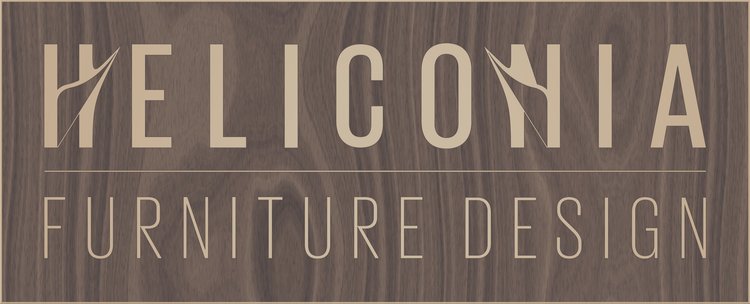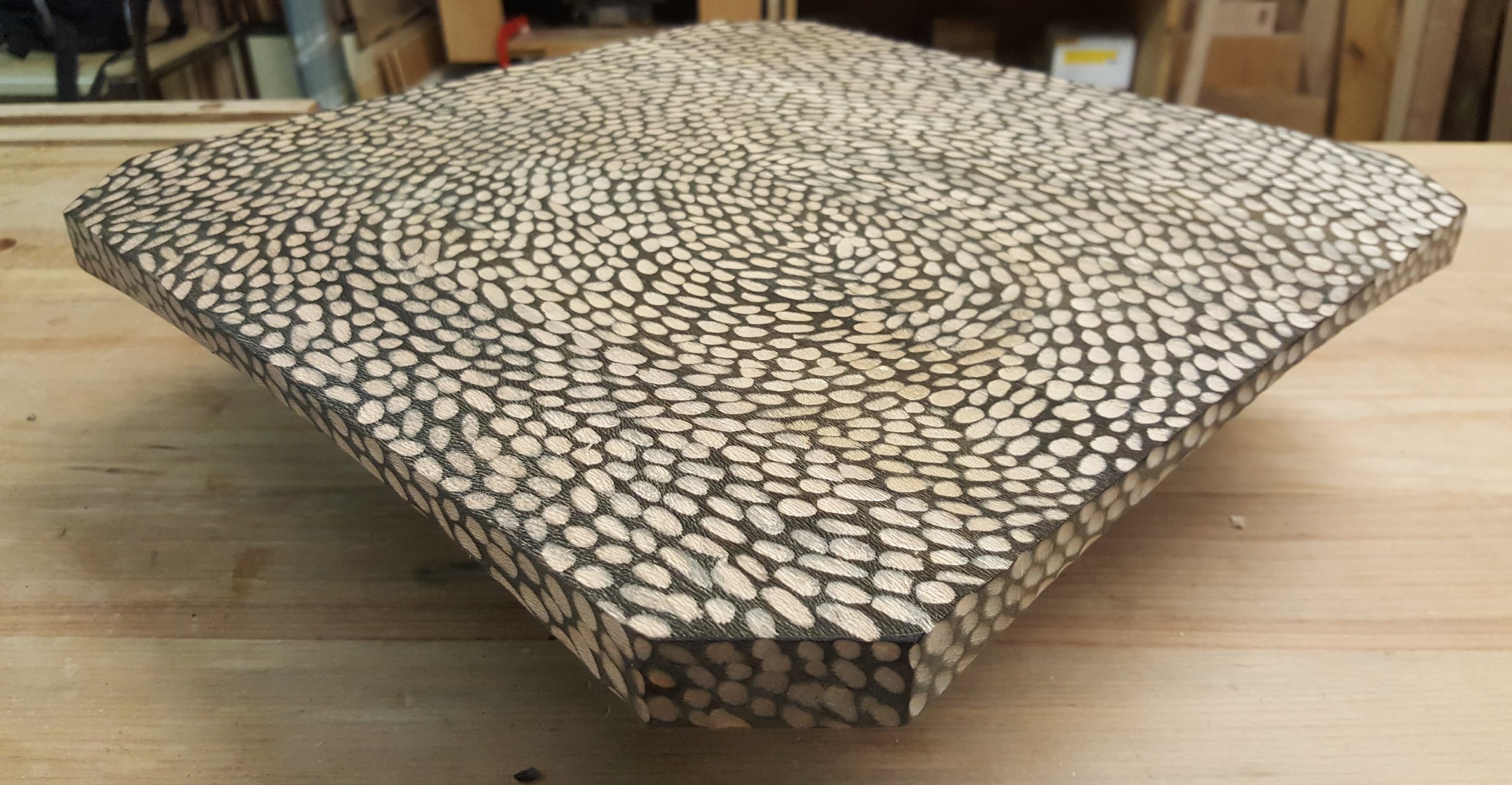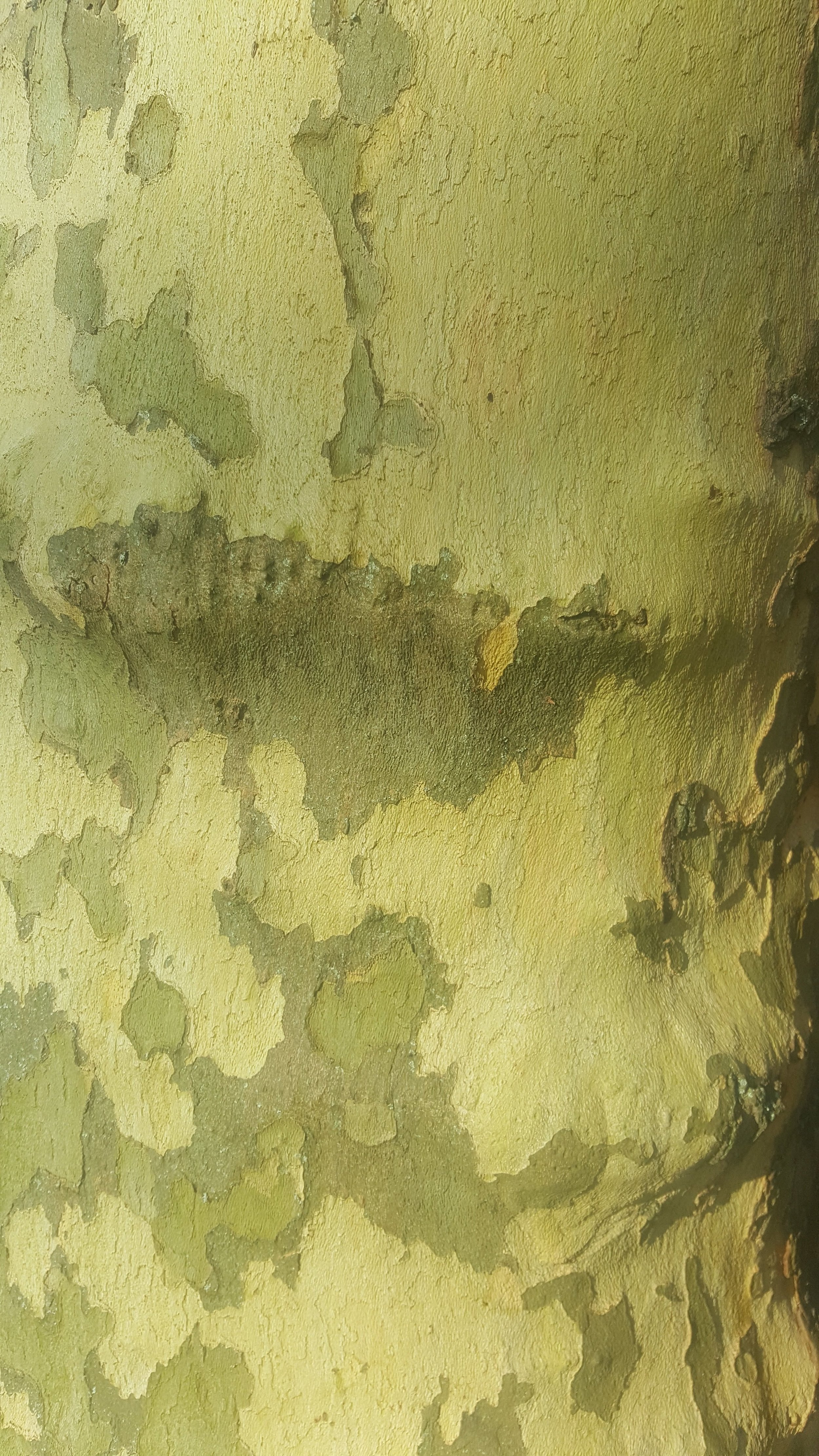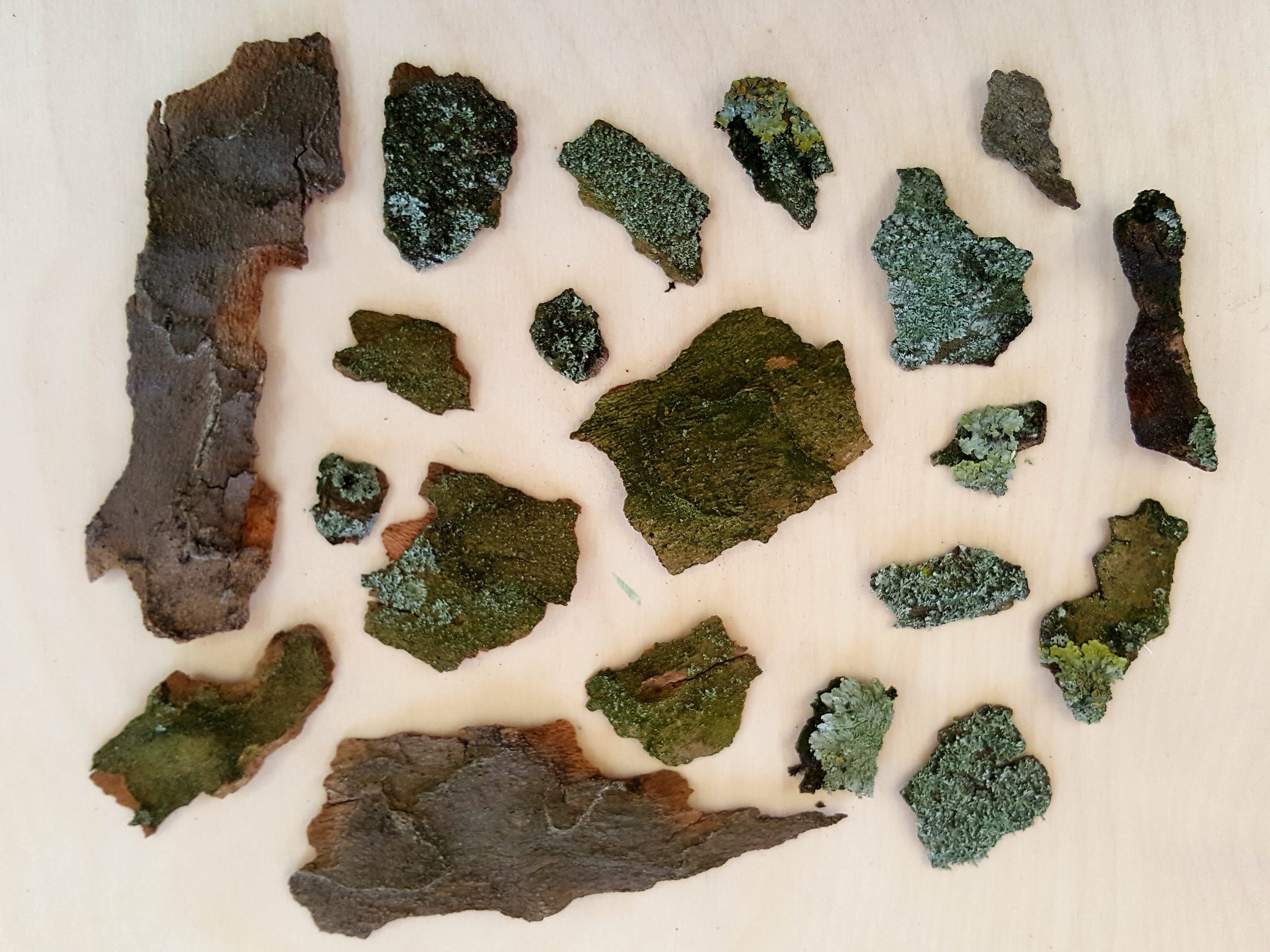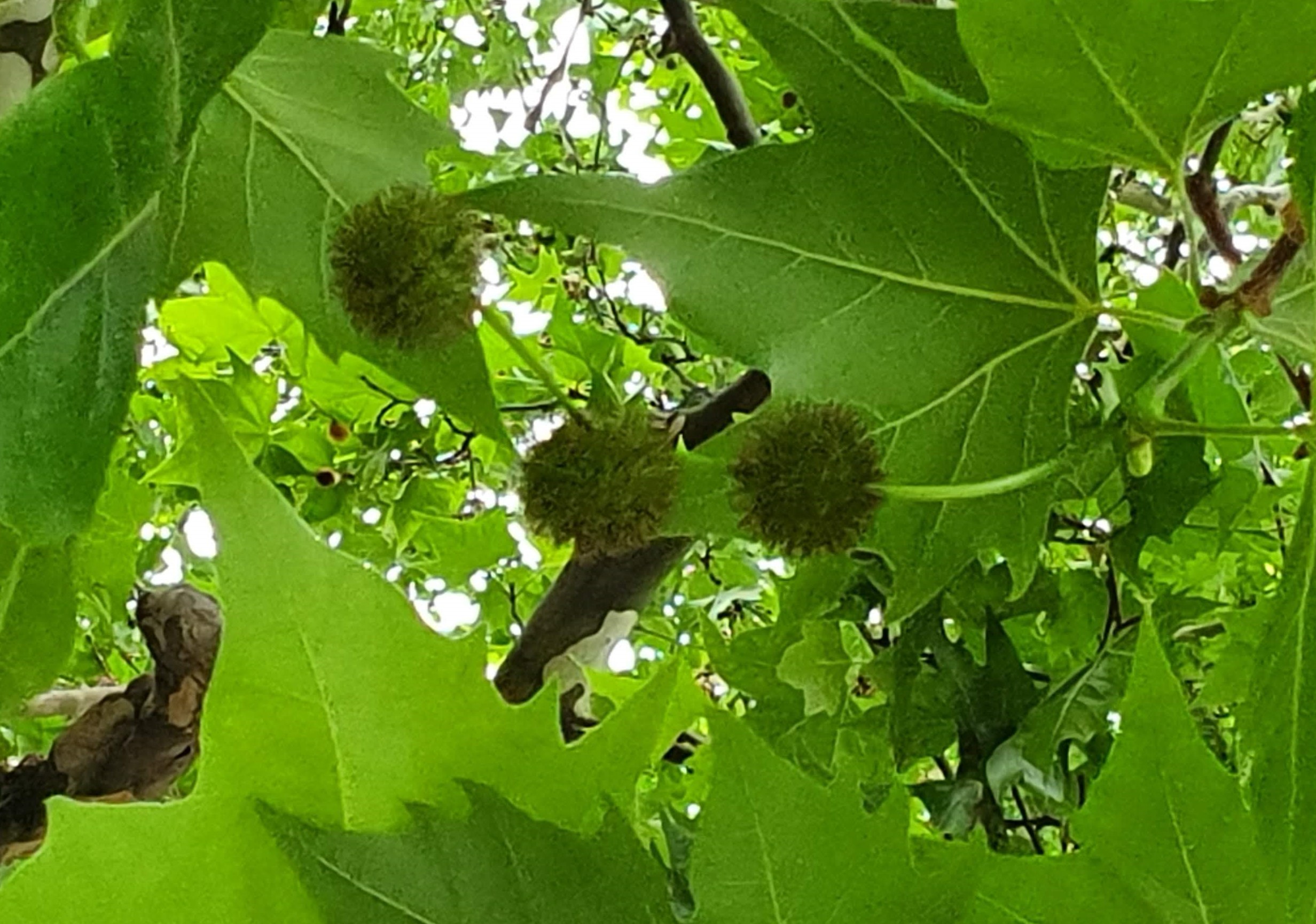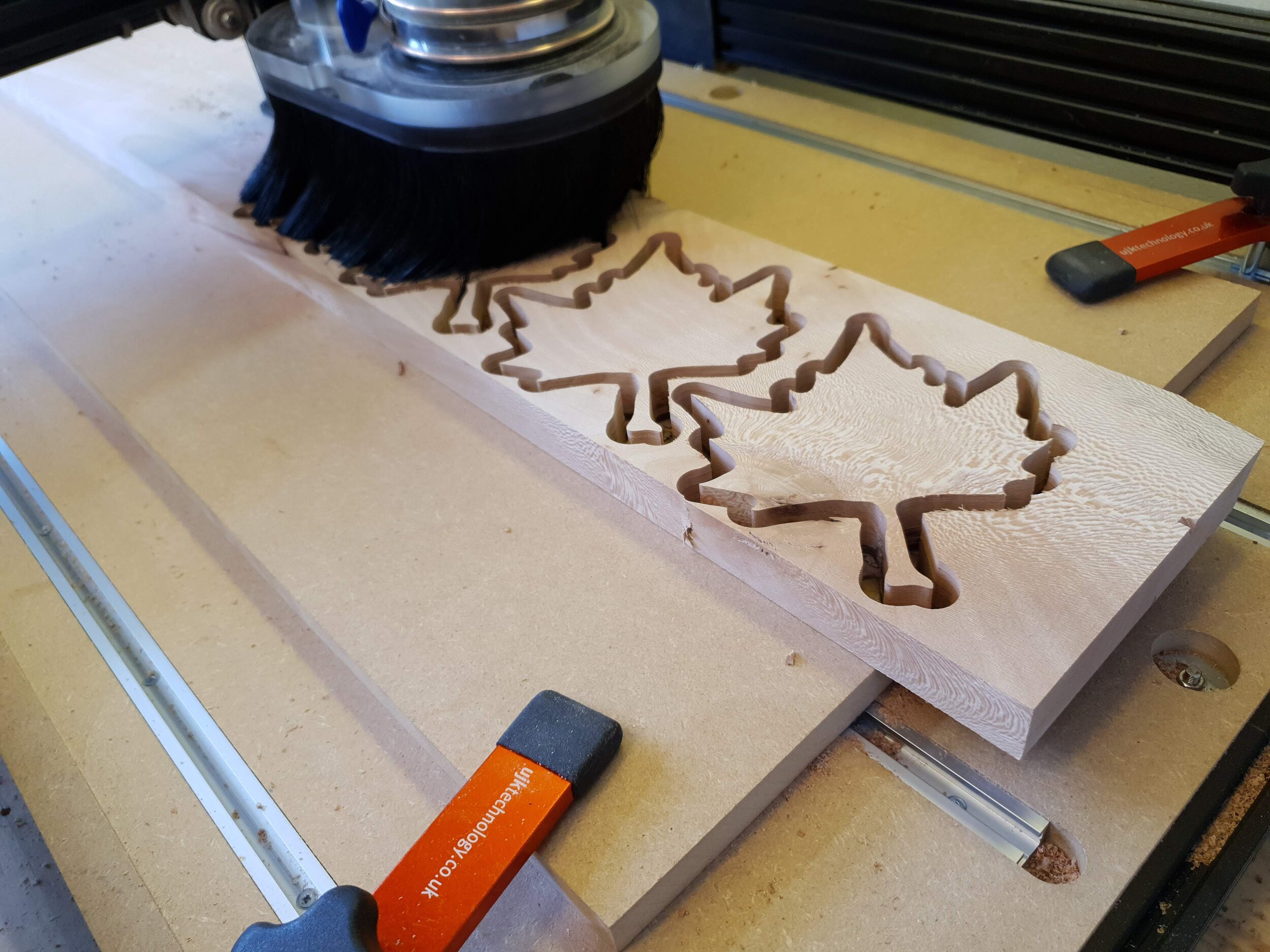The London Plane Project
The London Plane Project is a comprehensive exploration of one material - the timber of the London Plane tree. Restricting my palate to this one tree species, I have designed and made ‘Drift,’ a small collection of contemporary craft furniture.
In the last two years I have become fascinated by this ubiquitous London tree - dulling the noise and sucking up our pollution – doing everything for us when alive but as a furniture timber it remains underused. Between the commission furniture that accounts for the majority of my practice, I have taken the opportunity to comprehensively explore this specific tree species to discover its versatilities and possibilities and have a lot of fun doing it.
My first major work using London Plane was a timber re-use commission for a large residential developer in 2016, making furniture pieces from timber felled on site. Since then I have explored the material; the young pale tones and the old tea orange brown and everything in between, applying different techniques to produce a variety of tones, textures and forms. I have steam-bent it, laminated it, burnt it, oxidised it, bleached it, carved it, gouged it, scraped it, wire-brushed it, made dovetail joints, fox tenons, finger joints and lap joints and dowels.
Along with an illustration of the processes and techniques, the final collection of tables, seating and objects was displayed at the London Design Fair in September 2019.
The furniture Design
After many experiments and prototypes, the final designs have a modernist styling with very simple lines and jointing to illustrate the visual versatility of London Plane and power of the Lacewood grain figure. After making reproductions and reinterpretations of early 20th century furniture including Gerard Rietveld’s Red Blue Chair along with research on the American Arts & Crafts Movement and European Modernism, I realised that designing furniture with stylistic restriction was the appropriate way to showcase both traditional hand tool methods and the visual qualities of London Plane, and Lacewood in particular.
Occasional Table - Lacewood & oxidised Lacewood frame with hand gouged & oxidised London Plane tabletop.
The top of this table is initially oxidised with an iron and vingar solution, which colours the London Plane timber a dark grey colour. The surface is then hand carved with a gouge chisel, which takes most of a day and is undertaken in one session, producing a spontaneous and unique pattern. The process reveals the original grain figure of the timber, which contrasts beautifully with the oxidised colouration.
The frame and legs are made with half-joints and strengthened with dowels. The choice of a simple construction highlights the contrast between the grey ebonisation of the rails and the wilder natural lacewood on the legs.
Vanity table or dressing table
This is a modern piece with clean lines and angular edges in which the wild carving could be contained. The challenge with the piece was trying to incorporate many of the experiments of the London Plane Project in a harmonious way. The table is also an opportunity for the Lacewood cut of the tree to be celebrated in all its natural opulence.
The table top is made from pale lacewood boards, the edges shaped by hand with a block plane and spoke shave, creating a series of falling curves and facets which soften the rectangle of the top. The legs and tabletop edges have cupped facets, hand cut with a spoke shave which reveals the variety of lacewood figure from mild feathering to wild tiger stripes.
The drawer front is ebonised and gouged with a gouge chisel as per my previous two experiments and this wild dark rectangle is contained within the pale natural tones of the lacewood drawer box
Tripod Stool - lacewood & brass legs and a hand gouged & oxidised London Plane seat.
This glamorous stool has an oxidised seat - gouge carved to reveal the London Plane figure. The lacewood legs are tapered on boith planes and are complimented with brass dowel stretchers. The stretchers are configured to drop down to the next leg - the brushed brass adding a glint of bling.
The London Plane Tree (Platanus × acerifolia)
Platanus × acerifolia, the London Plane, the Plane tree, the American Sycamore, Platane, Platano. The variously named and most useful of city trees, the London Plane tree can be found planted and mature on the avenues of most European and North American cities.
The London plane is the perfect city tree, dealing with the street pollution by absorbing it into its bark, which it then sheds like battered pieces of armour. This is what gives it it's mottled camouflage look - particularly visible in the springtime before leaf growth. The bark appears to shed on a natural cycle rather than as a response to specific, localised pollution. Certainly, the London Plane trees in the quieter streets of Bermondsey appear to shed as much bark as the pollarded soldiers along the South circular in Catford.
The tree has broad, five lobbed leaves which gives it a resemblance to the Maple and the Sycamore, neither of which it is related to. The conker shaped flowers/fruits, or ‘button balls’ as some would have it, hang down in twos or threes on long storks and appear to be flowerless. In fact, the Plane does very well without the fluctuating bee population as it produces no nectar (like many conifers) and is propagated on the wind when, in early summer gusts carry the flower dust across the streets and parks of the city.
The London Plane was formally described in botanical literature by the Scottish botanist William Aiton, in his 1789 work ‘Hortus Kewensis’, as a variety of Plane Orientalis. It is in fact a hybridization of the Plane Orientalis and Plane Occidentalis, which were planted close to each other in the 17th century in, depending on your favourite story, Spain or at Vauxhall Gardens in London. I will believe the later story for myriad of reasons, but mainly its proximity to what would become the infamous pleasure gardens.
In the early 19th century the trees spread through the great parks and other public spaces. The British library and the Kings College Library in London hold extensive records of planting schemes along with London Plane related newspaper stories. There are accidents noted that involved the trees, disputed property boundaries which passed through trees and in one incident, a man was prosecuted for selling a poisonous tea (made from London Plane leaves) to the unsuspecting visitors to Hyde Park.
But it was in the mid to late 19th century that the Plane began to be planted in greater numbers along the city streets and near factories, specifically to soak up the soot and dust from the gathering industrial revolution. The population has been supplemented many times since, with planting schemes both public and private. Bizarrely, it may be their very ubiquity that renders them invisible to most people. Spot one and give it some thanks for giving your city a little more breathing space.
Timber of the London Plane
The timber of the London Plane is uniquely exotic and varied in its appearance for a homegrown timber - from the young pale tone to the mature timber with its orangey brown colour and every shade in between. Then there are the black streaks of the Blue Stain fungal disease and then the fortuitous spalting effect when the blue stain meets a second fungus and the two fight it out until clear black lines are formed along their battle fronts.
The timber of the London Plane is varied in its appearance and uniquely exotic for a homegrown timber. From the young pale tones to the mature timber with its orangey tea brown colour and all and every shade in between. These fantastic rays are revealed by quarter-sawing the tree rather than sawing straight through. The medullary rays grow perpendicular to the grain so to reveal this prime quality of the timber, you saw the logs perpendicular to the surface (as best as you can on the round) and in four quarters. As you can see from the diagrams (left & right) - this is much more wasteful than a plain cut straight through the boards and is subsequently more expensive to purchase.
My first major work using London Plane was a timber re-use commission for Lend Lease for their Elephant Park development at Elephant & Castle in South London, making furniture pieces from timber felled on site. I was immersed in this project for several months and looked at and touched nothing but London Plane, dealing with its various idiosyncrasies and qualities. However, the first London Plane timber I used was supplied by friend and woodworker, Jeff Segal, who spotted a fallen giant in the garden of a West London vicarage. A Lucas mill - a mobile milling system involving a chainsaw was called in to convert the tree into timber. An account of this can be read on Jeff’s Blog.
Working London Plane and Lacewood
Its tempting to say that Lacewood can only be hand worked and although traditional tools are a key part of the process they are not the only part. The medullary rays on the Lacewood can leap in all directions at once and working the timber with machines can pull the fibres up and out - leaving deep unrecoverable tears. During the making of the pieces for the project I used a wire brushes, rasps and files, a cabinet scraper, a travisher, a spoke shave, bevel and gouge chisels and hand planes and hand saws. However, where the character of the timber was less tricky I have used hand routers, router tables and then the CNC machine for my final experiment.
Edges, Facets and curves
When shaping the dressing table in (mostly) wild lacewood, the hand tools came to the fore. I wanted to bring out many of the visual characteristics of London Plane in one furniture piece. As well as hand cutting and chiselling the dovetailed drawers I used various hand planes to finish the edges of the top and hand carved and gouged certain areas to add a textural dimension.
Using the spoke shave
My favourite tool is the spokeshave, a squat two handed plane that removes material in a localised area. They come with either a convex or a concave profile. I use a convex profile to scoop facetted depressions into the top and the legs.
In the video to the left I am using the spoke shave to shape a curved facet on the inside leg of the dressing table. I mark out accurately the area to work and with a very sharp blade, position correctly and hold tightly. I start removing material from the centre of the facet and work outwards from the centre towards the extremes, eventually working the whole length in one movement to create an even and smooth finish. As I cut through the medullary rays at roughly 45 degrees, the facets expose another weight of lacewood figure that looks halfway between the wild lacewood on the front face and the regular London plane on the outside face.
Oxidisation
As part of the London Plane Project I have experimented with oxidisation, a process of darkening or colouring a timber in a natural and respectful way – i.e. without the use of noxious chemicals or without covering the grain figure of the wood with paint. An oxidising solution reacts with the tannins that naturally occur in the wood - acidity in the sap to be precise. London Plane doesn't have a lot of tannin in it so it doesn’t turn jet black as with Oak or Ash but rather a pleasing grey colour (London Plane grey?), which works in perfect contrast with the un-oxidised lacewood.
Making the oxidising solution would appear straightforward – add steel to vinegar and leave for at least two weeks. But, as you might imagine, this is the least of it. That is merely the foundation. Through several rounds of experimentation, I have worked out the following about the oxidising solution;
The solution needs to be quite old, like craftspeople and wine it picks up qualities through its maturity alone.
It needs a lot of rusty old pieces in it. At first I thought it may get redder in tone but it didnt.
And it needs to be exposed to the air as much as possible. It will evaporate if left perfectly uncovered but try to give it lots of air daily.
Ebonised London Plane - its tannins drawn by tea (on the left) and red wine (on the right)
Application
When using the solution prepare the timber with a tannin heavy liquid such as tea or red wine. This draws out the tannin in the timber to make the reaction stronger - especially important for a timber like London Plane. Strong tea is perfect, the wine is powerful but does make the final colour redder if you use too much but as the image to the left illustrates, if used sparingly the Plane turns more grey and silver. However, different pieces of Plane treated with the same process can result in very different outcomes. Rules;
Make sure the tea completely dries before applying the oxidising solution, the pale patches left on the wood is where the tea was still wet!
Cut back the timber after the tea has dried with some fine grey Mirka pads or for a more intresting more textured finish try attacking it with a steel wire brush. This worked very well with oxidised Lacewood.
Apply the solution consistently as if a stain or a paint – it will streak and blotch.
Wear double gloves. The stain on your hands are extreme and take about five days to come out!
Oxidisation has undoubtedly added a new dimension to London Plane and the Lacewood in particular. Not only does it expanded the tonal possibilities of the finishes available but with the quarter-sawn Lacewood it accentuates the iridescence of the medullary rays while flattening the tone of the field behind them. I love it!
Gouge Carving – The mindfulness drift
I am a cabinet maker, a furniture maker – not a carver. My work is structured and organised using technical drawings with precise dimensions and working the figurative and tonal palette of a familiar timbers. There are basic engineering rules to be adhered to and techniques that are studied and practiced and enhanced over a period of time. This foundation does not invite much innovation or risk taking and generally I wouldn’t attempt to do things that I have not learnt properly.
I have had no training on carving, even on the basic textural stuff I apply, and I have done very little reading. I bought tools that I liked the look of and liked the feel of in my hand and just got on with it (no.7 and no.8 gouge). This approach is unburdened by expectation or ideas of perfection and has had two major impacts on my practice. The first is the thoughtless drift it sends me into - a mindfulness I guess, which has all the associated benefits to my wellbeing. Secondly it adds a randomness or wildness to my work. This randomness isn’t just a decorative motif added to the restrained lines of the furniture but is also a way of adding narrative value – piling up layers of visual and textural detail. The client can see exactly what I have been doing and understand the time and effort that has been applied. Its interesting that despite knowing nothing about carving when I started, it only took a few days before I began to collate my own rules on technique; specific to London Plane and the chisels I was using. So obviously I started to develop expectations of myself, which was followed by anxieties when I thought these expectations would not be met. Not only is there a tacit knowledge building around my use of the chisels and the feel of the material but also ideas of quality and work ethic. Typical!
Anyway, it was still fun because I was achieving what I wanted, or close to it. This is what I learnt;
When holding the chisel, hold the chisel as low down to the timber as possible and support the blade with the other hand.
Dig the centre of the cutting edge in into the timber and scoop upwards.
The direction of the grain is so important to how evenly spaced the gouges are, how consistent their sizes and shape. I carve slightly across the grain – gouging along the grain is tricky to control and carving directly across the grain produces a very rough finish to the gouged depressions.
Randomness in shapes, pattern and quality of the gouged depressions also depend on the wildness of the feathered or lacewood figure and the amount of sapwood. You can get very different results from each particular square cm of timber so always pay attention to how the character is changing across the timber, especially if the panel consists of several butt jointed boards.
Steam bending
Timber selection is always important when it comes to steam bending and selecting the right Lacewood is no exception. Is the grain straight enough but still have character? Is the timber free from knots and defects? I could not find any advice regarding the steam treatment of London Plane, quarter-sawn or otherwise or how it ranks in the advisable or not chart (Oak and Ash being at the top of the chart).
In the spring of 2019 I made a steam chamber from redundant aluminium ducting, put to good re:use after changing my extraction configuration last year. Inside I placed two aluminium poles and the timber stock sits on these with very little contact – allowing good steam circulation. Although the chamber gets very hot to touch it circulates the steam well and I am able to manage how much steam is contained and how much is released for pressure control.
I have experimented with some very tight curves but even on very thin stock, the lacewood snapped when pushed towards 300 degrees. So many splits and snaps! However, the dressing table now being made to show at the London design Fair has gently curved leg rails and mirror stand, and this curve proved no challenge and with a simple dowel jig (rather than a comprehensive forma), the rails came out as intended.
I love this technique so much that I intend to build a 2m long steam chamber and although I wont become Joseph Walsh overnight, I think I have enough of a handle on it to work on some more ambitious projects (in Ash!)
Colourisation - Using London Plane as a wood Dye
My next experiment with London Plane was to use various parts of the living tree to stain seasoned timber. I tried different leaves off different trees but the waxy leaves didn't really break down, even after a couple of hours of patiently adding water and mordant and not letting it dry out. The bark created only a brown colourisation. I eventually elected to use the Button balls or seed containers that you find on the London Plane tree - a sort of soft conker.
I chopped the material up very fine and then added it to the boiling water and then reduced it down as much possible. I spent two hours adding water. I used Alum as a mordant as it was readily available and because its powdered I guess, I found it easy to judge the appropriate quantities needed during the process. I added the Alum while the simmering vegetation was still on the stove and so easily settled on the right consistency and colour. When I was happy I removed from the heat and let it cool down. Once room temperature I used a Muller to grind it down to a fine pulp.
When applying to the timber, I selected the palest stock I could fine and finished it to 240 grit and then prepared it with vinegar water solution. Once dry I cut back the raised timber fibres with a very fine abrasive and then applied the stain generously.
The result is not at the brilliant end of the colour scale but is certainly worth the small amount of effort producing a chalky green – not unlike French Grey.
CNC - Batch production using a computer controlled milling machine
The final experiment in The London Plane Project was to create a small batch job on a CNC machine to explore the materials value in repetition and uniformity. I drew a picture of a London Plane leaf and imported it into software for the CNC machine to mass produce. I would finish these leaves by hand being careful not to alter the faces of the leaves and their uniformity maintained.
Regarding Software. I started by using Autodesk Fusion but this heavy and complicated software is more appropriate for complex, multi layered models and also the more geometric. The simple yet organic image of the leaf was more suited to another application – Vectrix, were I imported my vector directly into the application without the need to extrude or further manipulate.
Observations on it working. Some of the stock twisted over the weekend and the cutter passed through deeper at one end of the stock to the other but with planning and sanding this discrepancy was easily removed. And despite my worries, the sharpness and speed of the cutter passed over knots without exploding the stock. This was a simple job and problems only really occurred during the setting up of the machine itself and once tested the cutting out of a leaf form was never going to be a challenge from a milling point of view.
Ultimately, repetitive uniformity is what was needed and this is what has been achieved - the different figures and grain pattern has been accentuated when captured within the standardised form. A fitting finish to the London Plane Project – showcasing the variety of tones and textures from one timber.
